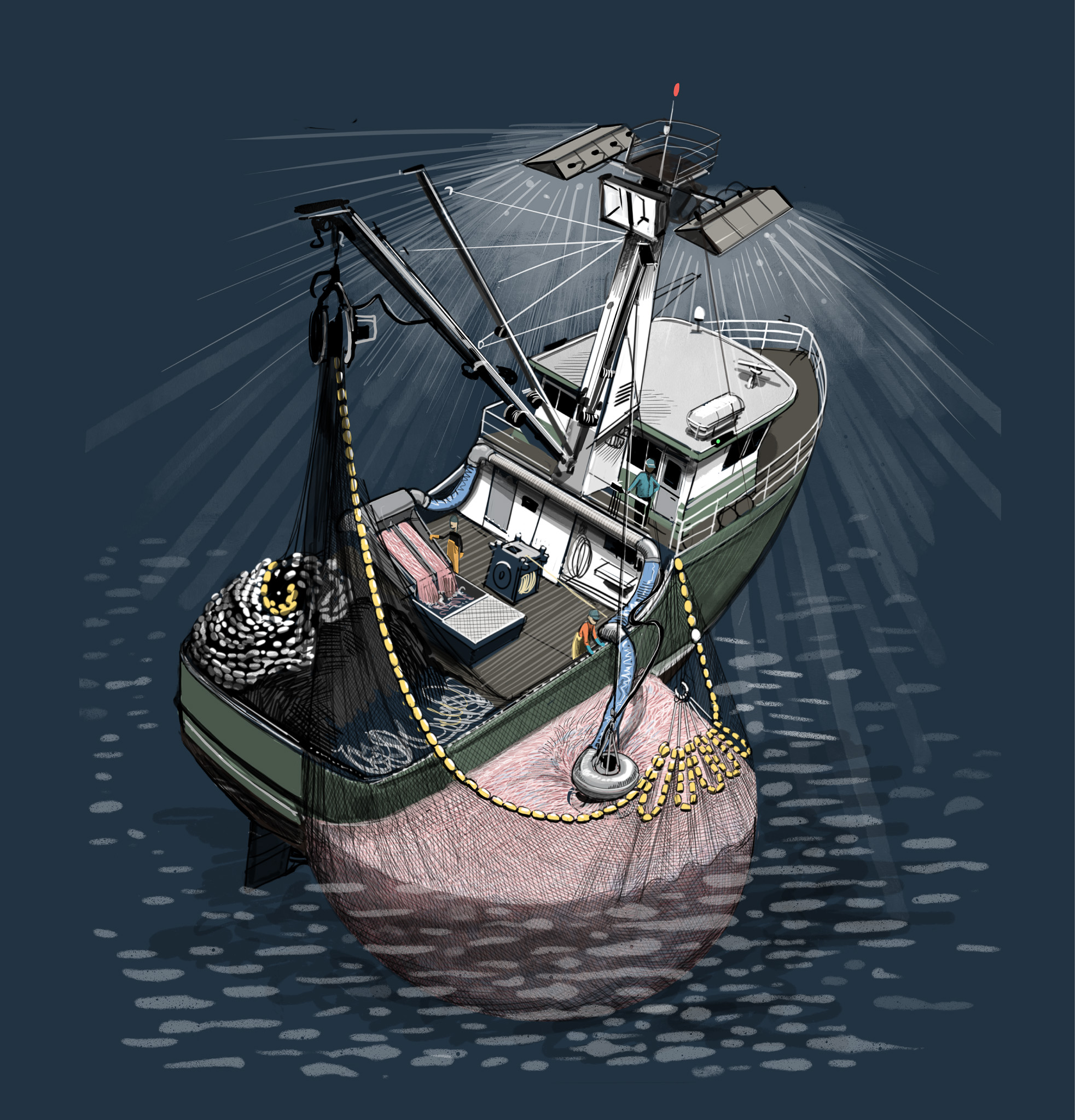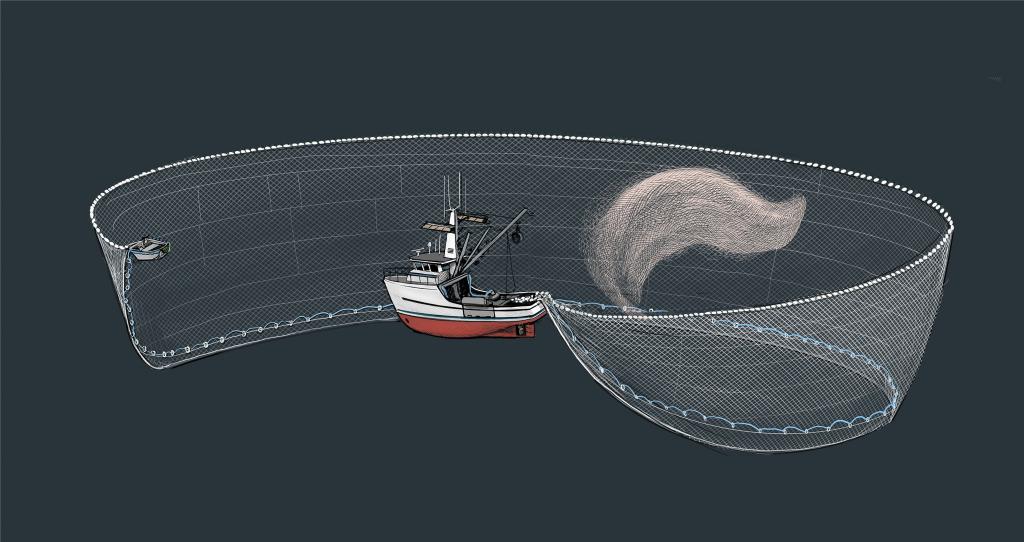
Purse seine nets are the most commonly used “round haul” nets on the West Coast. Like other round haul gear (e.g., lampara nets), purse seines capture schools of fish by encircling them with mesh netting. Purse seines are used to target market squid, coastal pelagic species (CPS) finfish like sardine and mackerel, and schooling salmon such as chum salmon, pink salmon and coho salmon. Once a school of fish is located, the main vessel (the “purse seine”) and a skiff it launches work together to deploy (set) the net. The net is set either by hand or with the aid of a drum (spool) attached to the back of the vessel. For hand deployment, the skiff holds the line while the crew lets out the net as the purse seiner encircles the school of fish. 
For purse seiners with spools (known as drum seiners), the crew guides the net as it rolls off the drum. Once the net is set around the school of fish, the bottom lead line is pulled to close off ('purse') the net and prevent the catch from escaping downward. The net is brought alongside or onto the vessel with the help of a power block, a type of mechanical pulley. The catch is pumped or scooped from the net into the vessel’s holding tank. The net is then retrieved back onto the boat by hand, aided by the power block, or reeled in using the spool. Purse seine nets may be set and retrieved multiple times during a fishing trip.
CPS finfish are fished during the day, while squid are fished primarily at night. In the squid fishery, a “light boat” equipped with high intensity lights typically locates and aggregates the squid. The purse seiner then sets the net around the squid. When operating independently, light boats may use brail nets (large dip nets) to scoop aggregated squid or CPS finfish from the ocean.
